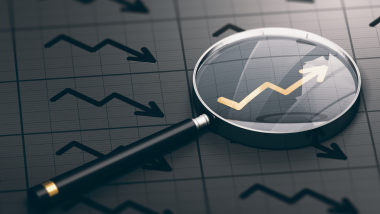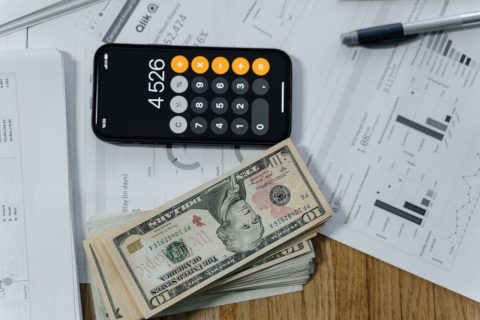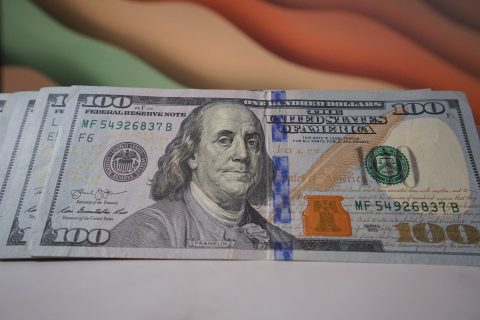Investors who wish to use their portfolios to generate income will frequently make purchases of stock in order to earn the dividend yield that the stock pays. Typically, when making purchases in this manner, the investor will be interested in a few different metrics regarding the holding’s dividend payments.
Some of these metrics will be readily apparent, such as how frequently a holding pays a dividend (on a monthly, quarterly, semi-annual or annual basis) and how much an investor can expect to earn per share per year (e.g. $1.50 per share annually). However, there are other metrics that are not so readily apparent that an investor will likely wish to inspect before making a purchase. Chief among these is the Dividend Yield for a position.
Let’s take a few moments to learn more about Dividend Yield, how it is calculated, and what factors that you may wish to consider regarding it to determine if a particular position would make a good addition to your portfolio.
What is Dividend Yield?
In the simplest terms, Dividend Yield is the payment received per share on each share of stock divided by the current market price of that stock. There are actually two different types of dividend yields that can be calculated. A trailing dividend yield represents the previous twelve months worth of payments that a stock has made divided by the market price; a forward dividend yield represents the (expected) next twelve months of payments divided by the market price. At TrackYourDividends, the Dividend Yield we provide to our users is always a forward yield.
Of course, a Dividend Yield that is calculated based on the market price will only be good to use to make a purchase on that particular day. If the dividend should change at some point in the future, you may wish to calculate whether it remains wise to hold a particular stock. This is where Yield on Cost comes in. Yield on Cost calculates the dividend yield for a holding based on your cost basis rather than the current market price. Considering the fact that there can be a substantial difference between your personal cost basis and the market price of a security, Yield on Cost can diverge significantly from the standard Dividend Yield.
Example – MCD vs. CVX
Let’s take a look at an example by comparing two well-known and established companies, McDonald’s Corporation (MCD) and Chevron Corporation (CVX). At present, the dividend paid per year by these two companies in terms of pure dollars are roughly equal; MCD is currently paying $6.08 per share while CVX is paying $6.04 annually.
Now let’s take a look at the Dividend Yield calculation for the positions. MCD is currently trading for about $282 per share. Taking the $6.08 per share payment and dividing it by $282, we arrive at a Dividend Yield of 2.16%. CVX, conversely, is currently trading at roughly $168 per share. Performing the same calculation, we find a current Dividend Yield for it of 3.56%.
The Yield on Cost could be a very different story. The MCD yield of 2.16% is based on purchasing shares at today’s market price of $282. However, what if the shares that you own were purchased back in March of 2020, when MCD was only trading at $130 per share? To calculate the Yield on Cost, you would take the current payment for MCD and divide it by your cost basis ($6.08/$130). This would result in a YOC calculation of 4.68%.
Performing the Dividend Yield and Yield on Cost calculations can help you to make informed decisions on what holdings to invest in. For example, if you have new funds available to rebalance your portfolio with, you may wish to invest in CVX, due to the fact that the current Dividend Yield for it is higher than MCD. However, if you are looking to possibly rebalance by selling off your holdings, you might wish to refrain from divesting from MCD, due to the fact that the Yield on Cost for it is higher than the current Dividend Yield for CVX.
Don’t Always Go for the Highest Yield
When investing for dividends, it is certainly very tempting to automatically invest in holdings that pay the highest current dividends. We all certainly want to earn as much money as we can in our portfolios. However, when pursuing a long-term investment strategy, we also want to strive to produce consistent Dividend Yields as well. There are several metrics we can investigate to determine if a high dividend also has the makings of a stable dividend.
One metric to focus on is the payout ratio. The payout ratio is the percentage of a corporation’s net income that is paid out in dividends. Many companies that have higher dividend yields may also have worryingly high payout ratios. A company that is paying out 200% of its net income in dividends would appear to be less sustainable than a company that pays out 50%.
Dividend Increases
Stocks that have higher payout ratios may be more susceptible to possibly decreases of their dividends in the future. Most investors who are looking for long-term dividend income will likely be interested in holdings that have an established pattern of dividend increases. The greater the quantity of increases and the longer the time frame, the more attractive a particular stock will tend to be to dividend focused investors.
Dividend Growth
The growth in size of the dividend itself is also a metric that should be taken into consideration. Consecutive dividend increases are important, but the size of the increase should also be considered. At 5-year dividend growth rate of 8% could signal greater payments in the future than a stock with a historical dividend growth rate of 5%.
Example – COST, XOM and PG
Let’s take a look at another comparison between three different companies. Costco Wholesale Corp (COST), Exxon Mobil Corp (XOM) and Procter & Gamble Co. (PG) represent three distinct areas of the wider economy. At present (April 2023), the three stocks pay dividends that are relatively equal in pure dollars; COST pays $3.60 per share annually, XOM pays $3.64 and PG $3.65. However, with a little bit of digging, we can see that the three dividends are unequal in some important ways.
First, let’s look at the basic forward yield. COST is the most expensive of the three stocks in the market right now; it is trading at nearly $483 per share. This accounts for a dividend yield of 0.74% going forward. PG, conversely, has a current price of roughly $152 per share, reflecting a yield of 2.4% going forward. Lastly, XOM is trading at about $115 per share, giving a yield of 3.16% for its dividend.
Next, let’s dig into payout ratios. PG has a payout ratio of 63%, indicating that the company pays out 63% of its net income in the form of dividends. This is a relatively healthy figure; the company is paying out steady dividends while still leaving over one-third of its total income for reinvestment into itself. However, both COST and XOM have significantly lower payout ratios at 27% each. The two companies are paying nearly equal dividends in pure dollars as PG but are having to use much less of their net incomes to do so.
Finally, let’s look at dividend increases and dividend growth. All three companies have long and established track records of dividend increases of at least 15 years and more. However, the growth of their dividends over time tells a different story. XOM and PG have had relatively modest increases of usually 5% or less year over year. COST, meanwhile, has seen much larger increases of 10% or more on average over the last five years. Given the relatively small payout ratio that COST also has, it is entirely possible that these types of dividend increases will continue into the future.
An investor that is looking to purchase any of these three stocks for his or her portfolio has any number of metrics that they can use to determine which one to purchase. However, considering a combination of dividend yield, dividend payout ratio, and dividend growth provides a more thorough analysis of a company’s dividend strategy.
The Bottom Line
Dividends represent a terrific opportunity for an investor to earn income to grow an investment account before retirement or to use in retirement to replace the income that was earned while working. Many dividend investors will want to maximize their returns to make their portfolios as efficient as possible. While this might initially seem like a daunting task, just a little bit of digging into the metrics of a particular stock should allow you to make an informed decision.




